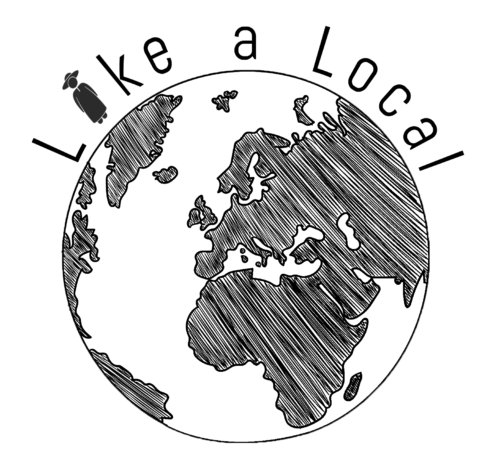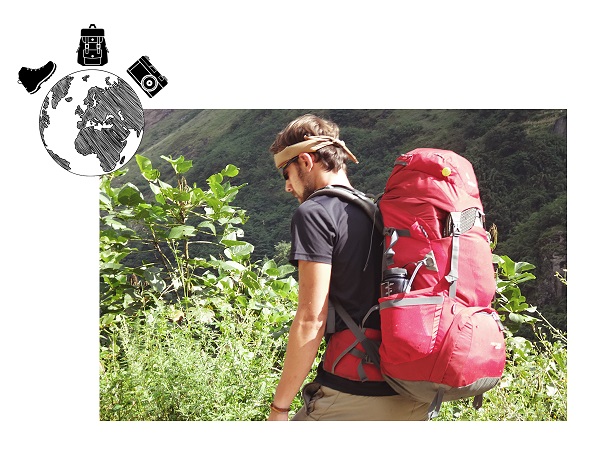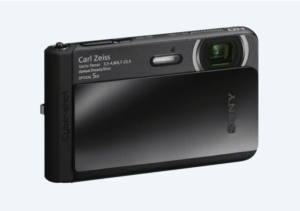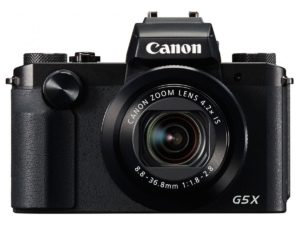What’s on this page?
Find here some useful tips and advice when travelling around the world to help you pack light and only bring the essentials, the most efficient way.
Travel Gears Advice page content:
- Travel Light
- Backpack
- Clothes & Essentials
- Electronics
- Miscellaneous
- Documents
- Like A Local
- World Regions Tips
Travel Light
Here is whatever you need to know. Go with the least stuff you can. This section gives you some advice, but we are all different with different needs so there is no perfect backpack. The only thing that applies to everyone is, travel light! Here are some reasons why you should:
- Being able to walk rather than taking transport to find accommodation when you arrive in a place (or at least take public transport)
- Being able (and happy) to go from one spot to another if there is a nice walking trail to do so. I have seen many people turning away so many very nice plans because they couldn’t walk with their stuff, you don’t want to be one of them
- Easier to fit in busy local transports
- Easier to pack your stuff back (btw, this is something you will do hundreds of time so the easier the better)
- Take it with you on flights (if managed well) and save time, money and hassle
- Think about that poor back you have, does it deserve carrying all that shit?
Backpack
The longer you travel the lighter you should travel. It will bring you so much more than what a heavy backpack full of stuff would.
Even if most of the time it is easy to leave your big one somewhere when you want to go walking, you need to be able to cover some distances with all your stuff on you. This must not be a problem!
It is also important to have a decent day pack because you will use it more often than you think. This is the main one you will use and walk with on day trips so take a decent size and with proper straps, etc.
Main Backpack
The ideal size to me is a 40+10 litres rucksack (or less if you can but then it makes me jealous because I couldn’t manage with a smaller one ;). With this size I even had a tent and a hammock inside (ok, not the full camping gears, just a small tent).
Things to consider:
- Weight of the backpack itself as this will already affect the total on the scale (clever me, I know)
- Compartments: not everything is always needed together, it is good to be able to split your rucksack (the Deuter rucksack at 2 main compartments separated by a zip) so you can only open the one needed without going through all your stuff.
- Have a “Dead zone / area”: store the things you have but don’t use everyday in an area of your bag you don’t have to go through to take the things you use the most. Am I making myself clear here…? 😉
- Fancy comfy rucksack with fragile air thingy net on the back? When buying your backpack, look at him and think of all the roughness it will endure. Don’t buy anything too precious.
I had a 40+10 litres Deuter rucksack but I also like to recommend the ones from Decathlon because they are cheap and very good value for money: Forclaz 50 litres and Forclaz Easyfit 50 litres.
Karrimor is another cheaper brand for rucksacks.
Other good backpacks include the Zulu 40 from Gregory and the Ubic 40 from Millet (for women) for their lightweight (both 1.3 Kg). Osprey has some good ones with the Farpint 40 or the slightly larger Kestrel 48.
Most of the main brands have some 40-50 litres backpacks in their range, then it is all about comfort, depending on your shape and taste.
Day pack
Less than 15-20 litres might be annoying in my opinion. Between some clothes, some stuff (book, sunglasses, cigarettes, other stuff you persist on keeping on you every day), a bit of food and some water, it means you already need a bit of space, it goes quickly!
Here was mine (slightly too big but very good and very cheap):
Don’t take something too fancy, this one will go everywhere you go. You will attract less with something basic and it is nicer to be a bit simpler when meeting locals. And you will literally destroy it !
Clothes & Essentials
Think of what you might need, then split it and take half of it 😉
If you started well by buying a not too big rucksack, then it is good already because you just won’t be able to fit too many pieces of cloth inside anyway, no temptation.
Another general rule is not to invest too much money taking the best stuff. Don’t think about bringing your favourite ones either. You will cry less if something goes wrong:
- Getting stolen (and good stuff attract more obviously)
- Getting damage (they will have a hard time on the road)
- Local laundry mess (damaging clothes, losing it, etc.)
- You, losing them (you are moving all the time, careful or not, you will leave things behind you, you will)
I won’t be the one giving you the full list (your mum and other websites do it well enough already) and we are all different in terms of needs but here are few tips to consider when packing:
- Underwear and t-shirts are quick to hand wash or cheap to replace so you don’t need too many of them
- In general, Easy to dry clothes are better than thick cotton when sweating or hand washing. The plan is not to have a full backpack with techy clothes but having one or two good items you will use almost every day could be a good call. For example, a multi-use short would be my pick. The new way short from Outlier is one but several brands exist. Don’t invest too much in it because you might lose it.
- Study well the weather of the places you are likely to visit. It hopefully will be hot and sunny mainly, which means flip flops, shorts and t-shirts, don’t bring things you will wear once in a while only. If some cold places are on the way, it will be easy and cheap enough to buy a warm jumper when needed and then give it to someone.
- A good pair of jeans is the most comfy and solid trouser but they get heavy and take ages to dry when wet. Go for these Asian light trousers, they are very comfy too!
- I know it is nice and convenient to have 2 pairs of shoes, a trekking one and a casual one but you can mainly spend your time in flip flops so, ask yourself if it is worth the weight and volume. Try maybe to get only one casual looking lightweight trekking pair of shoes. Forget about serious heavy waterproof trekking shoes that would never fit in your backpack. Light shoes that breath and are quick to dry are a better call.
- Forget heavy jackets to warm you up, a small and light windproof and waterproof should be enough, you shouldn’t need it too often
- In case of cold weather, it is better to have a warm long sleeves underwear for the top and some woollen tights you can wear under your usual clothes. Again, it won’t happen too often and it is a lightweight and volume solution.
- Flip flops or techy sandals, up to you but one of them for sure. Don’t spend too much on fancy shitty Havaianas, not that good, risk of getting them stolen, plenty of cheap strong flip flops all around the world.
Electronics
- Phone:
Mobile Phone
Go with a basic phone you won’t worry getting stolen or out of battery. Going with a smartphone might by tempting to do some search when you have Internet but these phones attract robbers a lot and they ran out of battery quickly (not handy when you don’t have access to electricity for few days). So just a basic phone without a big screen (for the battery). A strong phone can be good to make sure it will resist the rough time you will give it. I bought a solid waterproof one like with MTT (https://www.mobiletoutterrain.com/EN/mtt-protection-soundness-and-freedom-with-push-to-talk-system.html).
Sim Card
Think of a double sim cards slot, one for international sim card (to keep the same number for all your trip) and another local one per country. The international one is handy in case of emergency, you will be able to call abroad from wherever you are (and receive incoming calls).
Important : make sure incoming calls are free, so your stressed relatives can call you without using your credit.
I took a sim card with Travel Sim (https://travelsim.com/) but I guess there are many similar companies, just check the rates depending on the countries you plan to visit, etc. Use the Coupon code “free4” to get 20€ off the price (if still works, might be outdated now). One Sim Card seems to be another one with similar rates (http://www.onesimcard.com).
- Camera:
Small, compact, shockproof and with some extra camera batteries.
A compact camera doesn’t make the best photos but you won’t carry out too much money on you that way and you can have it in your pocket, not showing off to everyone around. I don’t want to keep stressing about my camera along the trip, I want my camera to last and be with me all the time, because you don’t plan taking photos, you should always have the possibility to take a shot.
I went for the Sony because I liked the fact that it didn’t have any external optical zoom, with means no worries with the zoom getting sands, dusts, shocks, etc. It also means that you don’t need to wait for the zoom to come out, you can take picture immediately. I am not sure if they still sell it but I had the TX30 Waterproof Camera with 5x Optical Zoom.
Otherwise, for some more quality photos, allowing you to more settings, etc but still solid and not too big, I like the Canon PowerShot G5 X.
Saving your photos
Regarding your photos, always back them up on extra USB keys or memory cards in case you lose or get your camera stolen. You can also back it up on the cloud when you have a good connection. Websites like Flickr offer 1 terra for free and is easy to use.
It happens every day to many travellers and losing few months of photos is not pleasant.
- Tablet:
So, if you don’t travel with a smartphone (cf phone section above), it could be good to have something to do some search on Internet. A computer is too big and heavy, a smartphone could be annoyingly too small for browsing information websites and runs out of battery. Get a small and not too expensive tablet or get nothing and go to internet café (like I did in South/Central America). The thing is, with WIFI and mobile data, there are less and less internet cafés with computers so that will become tricky in few years’ time.
I particularly like the Google Nexus tablet for its size and costs. I also recommend the Samsung Galaxy A6 7″.
And don’t forget an International Travel Plug Adapter with dual USB Ports. I insist on the dual USB ports thing, sometimes you need to share, sometimes you need to charge two things together, etc. Very handy to have.
Miscellaneous
- Travel sheet sleeping bag liner, it will give you some extra comfort where standards are low in a cheap accommodation and absolutely no volume nor weight. It is not cheap but it is a very handy thing to have while travelling. You don’t need a sleeping bag except if doing a camping trip in cold countries. The rare times it will be cold, extra blankets to put on top of you will be easy to find in accommodation.
- Hammock: one of the best value/use for space/weight item in my backpack. Cheap, lightweight, tiny volume and with so many ways to enjoy it (reading, resting, sleeping, swinging, etc.) Just take one with you, you won’t regret it.
- Strings and pins (dry clothes, attached stuff to stuff, etc.)
- Survival blanket (no weight, very handy in case of very cold situations/nights while camping)
- Headlamp (when you need light and your two hands, does happen)
- Games: good way to socialise and kill time (card deck, mini travel chess game, dice, etc.)
- Tobacco: if you are a smoker and you mind smoking shitty cigarettes or if you smoke rolling tobacco, stock up at the airport duty free when you have the opportunity to do so
- Travel note book (good to at least taking notes of places and dates, if you want to keep track of that information, you won’t remember it all)
- Earplugs
- Universal mosquito net (that could fit your hammock, could be hanged from a tree to sleep outside, put over a bed, etc.
- Water purifier tablets (tiny and handy when needed)
- Waterproof bags, zip, etc. to protect valuables for unavoidable shitty wet time
Documents
It is better to have some extra not always necessary papers than not enough, it can save you some troubles and make a difference at borders comparing to travellers that have nothing.
Frequent traveller passport:
It might be a good idea to get a special passport with more pages if you go on a long trip. I am lucky enough to have 2 passports (double nationalities) and I did fill up one so, a unique classic passport wouldn’t have been enough.
So, ask what are the conditions and prices to get a passport with more pages.
Here is a list of things you should always have copied with you (or at least when passing borders):
- Passport
- Credit cards
- Driver license
- International certificate of vaccination (in case you lose your original one and get checked for injections)
- Not too old bank statement (some countries ask to prove funds)
- ID photos (needed for visas sometimes)
+ send everything to your email to keep e-versions in the cloud.
Like A Local
Buy stuff on the way, basic stuff are often always cheaper in developing countries (padlock, medicine, basic clothes, etc) and nope, it is not only cheap shit quality (both ways it comes from Asia anyway 😊). Moreover, it will hurt less when you will leave stuff behind you or get them stolen (local stuff will attract less so you get less stolen too! 😉
Some websites recommend you to leave with a sewing and knitting kit to fix things. Maybe it’s me that is not good enough and don’t enjoy it that much but there are sewing places everywhere and they can fix things in a pro way for almost nothing so, I chose that way with my clothes.
Like I said before, in case of clothes you need for a short period (warmer clothes for the few weeks you go trekking in cold places), buy basic clothes the locals need and then give it back to a local before going back to warmer places. Don’t bother carrying stuff you will just use it few weeks in the year, this would be stupid.
World Regions Tips
- Asia / Muslim / Hindu / Buddhist countries:
Sarong: bring something to cover your shoulders and legs. Some countries will not really appreciate you wearing shorts/skirts or showing your shoulders, try to respect their culture and you will be more welcome. You also avoid to pay the tourist price when you will have to rent or buy one to enter in a religious temple or other place of interest.
- South / Central America:
Mate cup/gourd: coffee is not big (and good) there, the mate is the thing in Argentina and Uruguay. Handy and it is also a good way to meet people/locals when sharing it.



